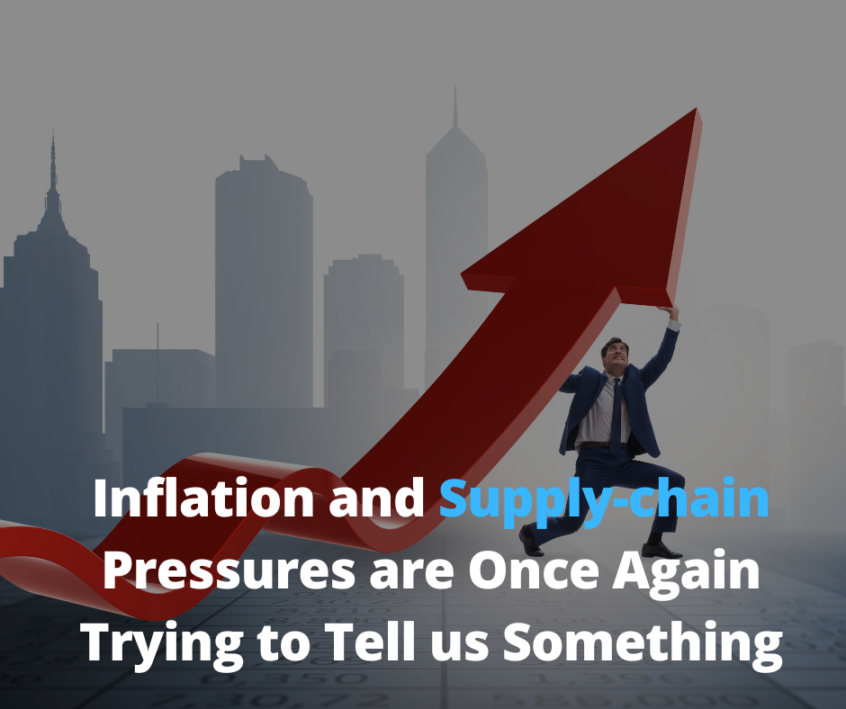
During the Covid-19 pandemic, there were significant supply chain pressures. Eventually, this turned into inflation. The patterns are returning, and business needs to watch trends. Many experts signaled that the supply-chain crisis of 2021 was a precursor to the inflationary pressures that duly ensued. The lockdown and the increase in work-from-home arrangements meant that deliveries were significantly delayed. This time, there are additional problems such as the war in Ukraine as well as new lockdowns that are taking place in China, a major manufacturer and exporter.
Many countries are experiencing high inflation
In many countries, inflation has reached unsustainable levels. Many experts blame the ongoing challenges of maintaining supply chains. Some countries are dealing with a risk of civil unrest following shortages of essential items such as food. The USA is a case in point, with inflation being the highest it has ever been in the last 40 years. A study by the Federal Reserve Bank of San Francisco in June said as much. Nevertheless, some optimists see signs of a potential recovery as supply chains begin recovering from the pressures they have recently faced.
Perhaps, the next big thing to consider is how long it will take for the full recovery to happen. Those in the know argue that it may be some time before the full recovery is achieved. The Global Supply Chain Pressure Index (GSCPI) measures the level of constraints faced by supply chains across the globe, with recent results showing that GSCPI is down by about 57% compared to December’s height last year. Despite the historic highs being experienced, the trend is showing some improvement. Still, the pressures on the supply chain have other effects on other parts of the economy.
How are the global shipping rates faring?
The World Container Index (WCI) measures shipping container freight rates across the globe. Recent statistics from WCI showed that rates had fallen by 37% when compared to the peak experienced in September 2021. The analysis of the statistics by Drewry, a shipping industry research and consulting firm, indicated that the rates were trending down even though they were still relatively high. For example, WCI is 84% above the half-decade average.
Nevertheless, some analysts interpret the downward trend as a sign that supply chains are beginning to manage their operations towards normalization. This is partly because consumer demand has started to weaken as well. For example, Lars Jensen (CEO) of Vespucci Maritime, a container-shipping industry consulting company, opined to Fortune that the past few years placed the industry in a state of extremes. One of the indicators of these extremes occurred when capacity could not meet demand. It is only in recent months that the situation has started to change for the better.
Examples of encouraging changes in shipping rates
As sport rate levels fall, experts see them as underscoring the transition phase that will take the industry back to some semblance of normality. The word of caution is always that this will be a marathon rather than a sprint. Industry actors should anticipate and plan for a slow recovery. However, that has not dampened the optimism of major players, such as Maersk, the Danish shipping giant. The company reported its second-quarter earnings this week and indicated an expectation of normalization of rates beginning the fourth quarter.
Dawn Tiura (CEO) of the Sourcing Industry Group (a professional association of sourcing and procurement) argues that the Maersk predictions could be overly optimistic, but that does not detract from the positive indicators coming out. This is based on the assumption that consumer demand will likely pick up or stabilize in the near-term, which would significantly ease supply chain pressures. The fly in the ointment is the significant backlog of appliances, materials, and cars yet to be shipped to their destinations globally. Thus, some predict that normality will only return in 2023—at the earliest.
Managing the pandemic-induced congestion
Despite the challenges the logistics industry has faced recently, there are signs of better responses. For example, the Port of Los Angeles, which is considered the busiest in the Western Hemisphere, is getting to grips with the congestion that arose during the Covid-19 pandemic. Nevertheless, the supply chain challenges persist. Gene Seroka, executive director at the port, informed CNN on Tuesday that the hitherto problematic backlog had fallen to just 19 vessels the previous day. This is a significant reduction from the crisis point when up to 109 vessels waited at sea to be processed through Los Angeles.
That does not mean that it is all good news. When speaking to CBS in a separate interview, Gene Seroka signposted the potential negative impact of contentious contract negotiations with the union representatives of rail workers. This could create additional bottlenecks if the ships arrive, yet staff is engaged in industrial action. A case in point is how 35,000 containers in the Los Angeles dock are destined for rail transportation. That is way above the normal range, which falls around 9000 containers. Nevertheless, shipping rates are just one of many factors that impact the efficiency of the global supply chain.
The different supply chains require functionality to thrive
The global supply chain has many components, and all must work well together to achieve normality. For instance, shipping relies on efficiency in manufacturing and transportation. Moreover, the interdependence of the various parts means that any disruption in one will necessarily negatively impact the others. The optimistic reading of the information coming out of the shipping industry should be tempered with the recognition that other variables are at play.
Moreover, the supply chain improvement will not necessarily bring down the inflation hitting consumers recently. Nicholas Sly of the Federal Reserve Bank of Kansas City argues that Americans should anticipate elevated prices for the foreseeable future. The decline in freight rates will take some time before their effects reach the consumer. Some say that it could take as much as 18 months before these reductions are felt in terms of more reasonable prices.
Wrapping up
As the supply chains start to deal with the fall-out from the Covid-19 pandemic, there is some optimism about reaching normality. Already big players like Maersk are anticipating a recovery in the next 12 months. Other experts are more cautionary in welcoming the positive news. This is because of the complexity and interdependency of the supply chain that includes manufacturing, shipping, rail transportation, and logistics. Therefore, the good news should be read with caution.


